
byMat Smith|@thatmatsmith| 13 hours ago 0
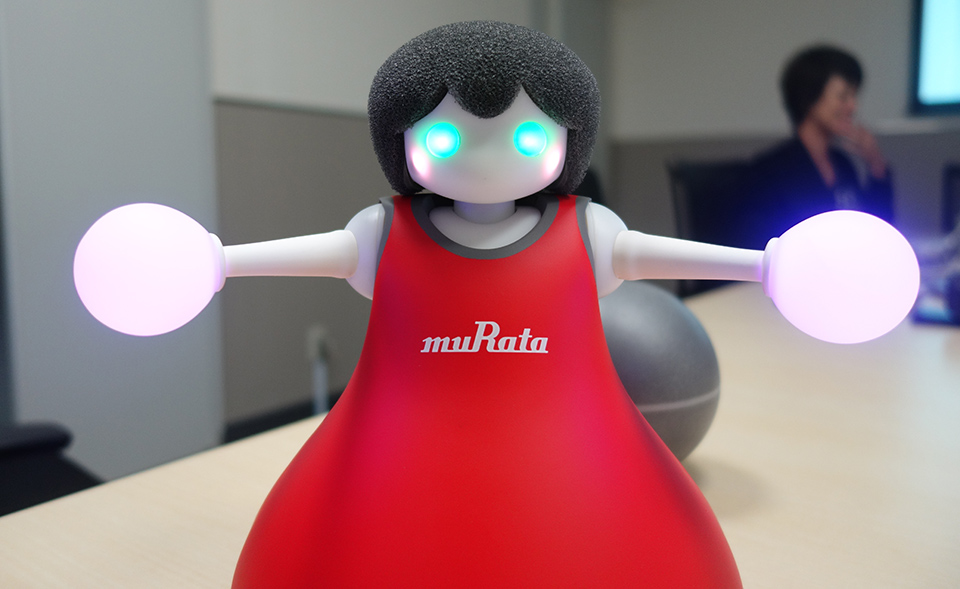
It's probably the most Japanese thing I've seen in my first year of covering the country for Engadget: Robo-cheerleaders, barreling around in sync like some sort of Japanese girl 'idol' group. In total, there's ten Cheerleader bots (with two standby units), with light-up cheeks, pom-pom arms that look like PlayStation peripherals and glowing eyes -- They glow, they lift their arms, they form ensemble shapes and are arguably the most adorable Weeble-esque robots you've ever laid eyes on. Following the bicycling Murata Boy and the unicycling Murata Girl, here's the Murata Cheerleader and her nine sisters. They're about to dance in formation, all while balancing on a ball. Not only because they simply can, but also because this is how their parent company showcases its (often mind-numbing, let's admit it) sensors and components to both businesses and Joe Public alike. Murata might not come to mind as the foremost robot maker - that's because it isn't. However, the component and sensor maker has a long history of unveiling tiny robotic mascots that showcase its sensors and technology that can (and does) make its way into everyday devices like smartphones. As Murata's Section Manager Koichi Yoshikawa puts it, while the Murata Boy series of robots might seem a little frivolous, it's about communicating something fun and the potential of high-functioning sensors, some of which could make their way into self-driving cars.
Understandably, ensuring a robot can keep its balance on a ball (with a special non-slip coating), takes a bit of work. There's a trio of gyroscopic sensors that monitor pitch yaw and row in three dimensions and detect tilt angles, while a trio of wheels spin onto the ball, rotating it all in the necessary directions and speed to either keep Cheerleader atop the ball, or move it where needed. (Similar gyro-sensors are used in electronic stability control (ESC) systems to prevent cars from skidding.) The nature of using the sphere as the wheel of sorts, is that the robot can both in all directions, while facing any direction -- ideal for avoiding other robot cheerleaders.
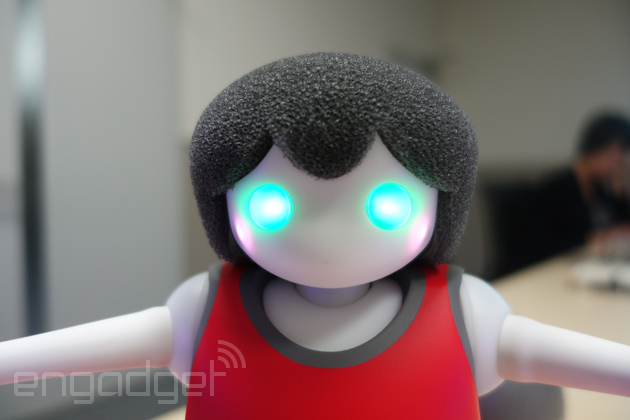
This is all well and good, until you throw in another nine ball-balancing robots. To ensure they keep upright, it's apparently a software issue, pairing multiple sensors within each robot with two towers that project a combination of ultrasonic and infrared signals. As we all know, light and sound travel at different speeds, thus when the robot gets detected (there's five mics and four sensors underneath the Cheerleaders' microphone sponge wig), the difference in signal timing gives distance. With the two posts, this also gives the location on a 2D plane. From there, the team can plan the (obviously important) choreography. If a single robot stumbles, not only does the software recalibrate to keep it on track, it also tells other robots to steer clear.
The robots use an intentionally low-frequency signal to ensure that it's picked up easier. According to the company, this would make them idea for working inside less-than ideal signal conditions, like deep within buildings and even inside structures, like tunnels and bridges that would require maintenance.
Single search robots, once they've found someone in need of rescue, could coalesce together to make a bigger bot capable of assisting -- which was the second-most Japanese thing I heard that day.
Yoshikawa-san elaborates that the some of the base research for these robots wasn't to create synchronized robot Cheerleaders (I'm still shocked), but as part of a study project with Kyoto University into using robots to effectively complete high-speed search and rescue sweeps as a unit. Further still, there's also the notion that single search robots, once they've found someone in need of rescue, could coalesce together to make a bigger bot capable of assistance -- which was the second most-Japanese thing I heard that day.
Source: Murata
Tags: buttheydontfalldown, ceatec, ceatec2014, cheerleader, hands-on, japan, murata, murataboy, muratacheerleader, robots, video, weebleswobble Hide Comments 0Comments Featured Stories
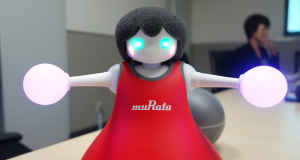
12 hours ago 0BlackBerry's Passport is a square in looks, but not personality1 day ago 0Acer Chromebook 13 review: long battery life, but performance falls short1 day ago 0BlackBerry put a $2,000 smartphone into our pauper's hands2 days ago 0The fun and weird moments of Tokyo Game Show 20142 days ago 0New Oculus Rift prototype brings out the best in virtual reality4 days ago 0Belkin Crock-Pot Smart Slow Cooker review: Can WiFi make cooking easier?5 days ago 0 Compare Your Gadgets

Instantly compare products side by side and see which one is best for you!
Try it now →
'Bash' command flaw leaves Linux, OS X and more open to attack

View the
Original article
 byEdgar Alvarez|@abcdedgar| 20 hours ago 0
byEdgar Alvarez|@abcdedgar| 20 hours ago 0 
 Murata's cheerleader robots move around on balls and do it in J-Pop unison12 hours ago 0BlackBerry's Passport is a square in looks, but not personality1 day ago 0Acer Chromebook 13 review: long battery life, but performance falls short1 day ago 0BlackBerry put a $2,000 smartphone into our pauper's hands2 days ago 0The fun and weird moments of Tokyo Game Show 20142 days ago 0New Oculus Rift prototype brings out the best in virtual reality4 days ago 0Belkin Crock-Pot Smart Slow Cooker review: Can WiFi make cooking easier?5 days ago 0 Compare Your Gadgets
Murata's cheerleader robots move around on balls and do it in J-Pop unison12 hours ago 0BlackBerry's Passport is a square in looks, but not personality1 day ago 0Acer Chromebook 13 review: long battery life, but performance falls short1 day ago 0BlackBerry put a $2,000 smartphone into our pauper's hands2 days ago 0The fun and weird moments of Tokyo Game Show 20142 days ago 0New Oculus Rift prototype brings out the best in virtual reality4 days ago 0Belkin Crock-Pot Smart Slow Cooker review: Can WiFi make cooking easier?5 days ago 0 Compare Your Gadgets
 byChris Velazco|@chrisvelazco| 19 hours ago 0
byChris Velazco|@chrisvelazco| 19 hours ago 0 

 byBilly Steele|@wmsteele| 19 hours ago 0
byBilly Steele|@wmsteele| 19 hours ago 0 
 byJon Fingas|@jonfingas| 18 hours ago 0
byJon Fingas|@jonfingas| 18 hours ago 0 
 bySean Buckley|@seaniccus| 18 hours ago 0
bySean Buckley|@seaniccus| 18 hours ago 0 
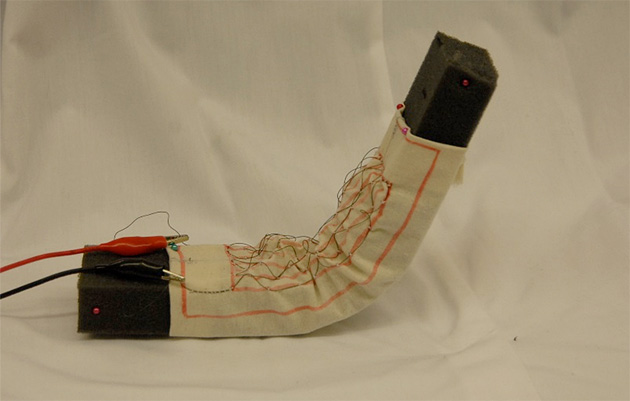

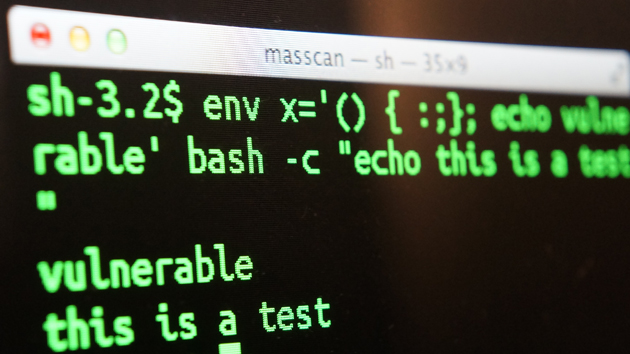
 Apple OS X Yosemite Key specs
Apple OS X Yosemite Key specs  byMat Smith|@thatmatsmith| 13 hours ago 0
byMat Smith|@thatmatsmith| 13 hours ago 0  It's probably the most Japanese thing I've seen in my first year of covering the country for Engadget: Robo-cheerleaders, barreling around in sync like some sort of Japanese girl 'idol' group. In total, there's ten Cheerleader bots (with two standby units), with light-up cheeks, pom-pom arms that look like PlayStation peripherals and glowing eyes -- They glow, they lift their arms, they form ensemble shapes and are arguably the most adorable Weeble-esque robots you've ever laid eyes on. Following the bicycling Murata Boy and the unicycling Murata Girl, here's the Murata Cheerleader and her nine sisters. They're about to dance in formation, all while balancing on a ball. Not only because they simply can, but also because this is how their parent company showcases its (often mind-numbing, let's admit it) sensors and components to both businesses and Joe Public alike. Murata might not come to mind as the foremost robot maker - that's because it isn't. However, the component and sensor maker has a long history of unveiling tiny robotic mascots that showcase its sensors and technology that can (and does) make its way into everyday devices like smartphones. As Murata's Section Manager Koichi Yoshikawa puts it, while the Murata Boy series of robots might seem a little frivolous, it's about communicating something fun and the potential of high-functioning sensors, some of which could make their way into self-driving cars.
It's probably the most Japanese thing I've seen in my first year of covering the country for Engadget: Robo-cheerleaders, barreling around in sync like some sort of Japanese girl 'idol' group. In total, there's ten Cheerleader bots (with two standby units), with light-up cheeks, pom-pom arms that look like PlayStation peripherals and glowing eyes -- They glow, they lift their arms, they form ensemble shapes and are arguably the most adorable Weeble-esque robots you've ever laid eyes on. Following the bicycling Murata Boy and the unicycling Murata Girl, here's the Murata Cheerleader and her nine sisters. They're about to dance in formation, all while balancing on a ball. Not only because they simply can, but also because this is how their parent company showcases its (often mind-numbing, let's admit it) sensors and components to both businesses and Joe Public alike. Murata might not come to mind as the foremost robot maker - that's because it isn't. However, the component and sensor maker has a long history of unveiling tiny robotic mascots that showcase its sensors and technology that can (and does) make its way into everyday devices like smartphones. As Murata's Section Manager Koichi Yoshikawa puts it, while the Murata Boy series of robots might seem a little frivolous, it's about communicating something fun and the potential of high-functioning sensors, some of which could make their way into self-driving cars.